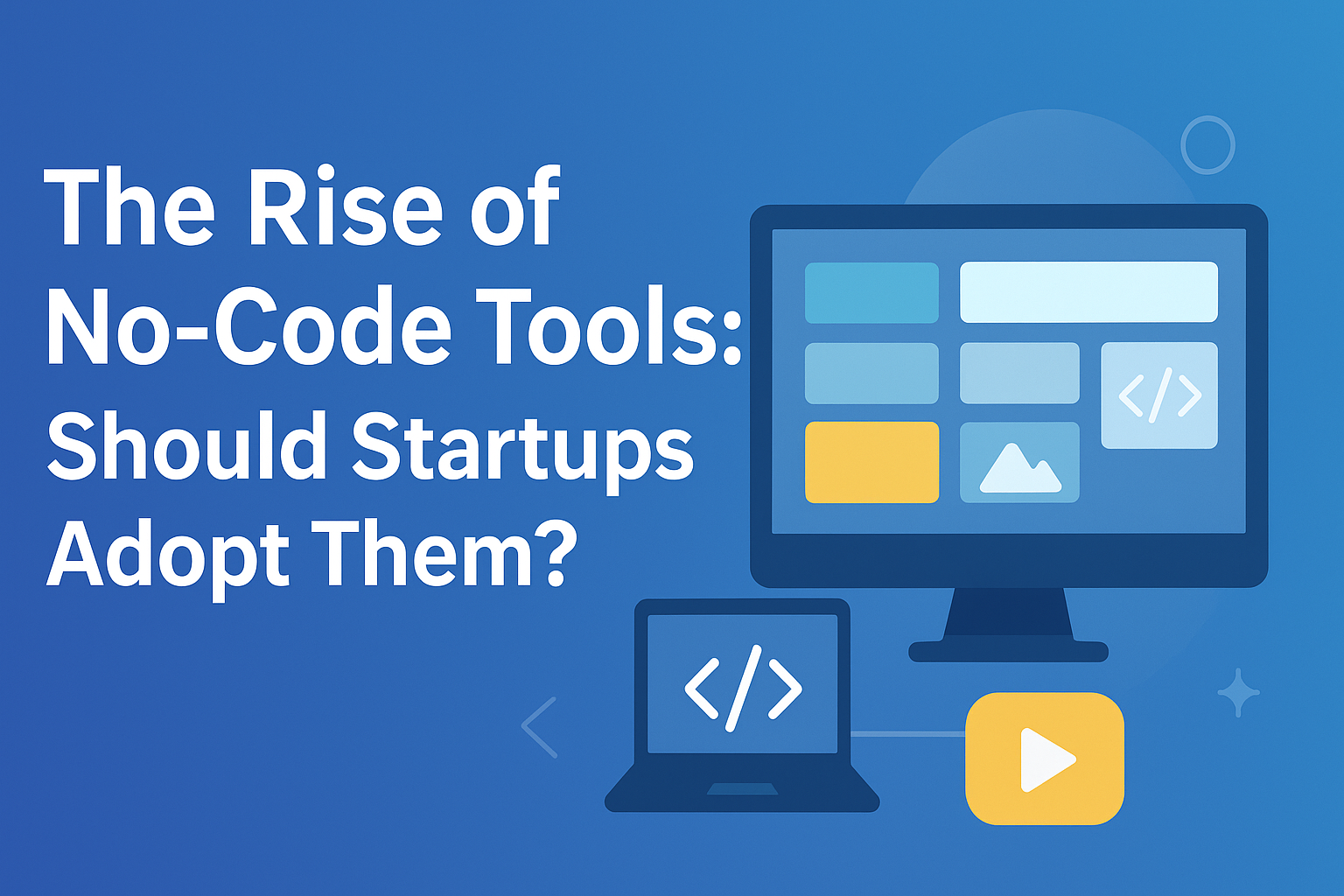The Rise of No-Code Tools: Should Startups Adopt Them?
In today’s fast-moving digital economy, startups are under constant pressure to launch products quickly, scale efficiently, and stay cost-effective. This is where the rise of no-code tools has become a game-changer. Platforms like Bubble, Webflow, Airtable, and Zapier allow entrepreneurs to build websites, applications, and workflows without writing a single line of code. But the question remains—should startups fully embrace them?
Let’s explore the opportunities and challenges behind the no-code movement.
🚀 What Are No-Code Tools?
No-code tools are software development platforms that allow users to build applications through drag-and-drop interfaces, templates, and pre-built modules. Instead of relying on traditional programming, startups can design functional apps, websites, or automation workflows using visual editors.
This means that even non-technical founders can prototype and launch ideas faster, reducing the dependency on hiring large development teams at the early stage.
✅ Benefits of No-Code Tools for Startups
1. Speed to Market
Startups thrive on agility. No-code platforms enable founders to launch MVPs (Minimum Viable Products) in weeks instead of months, making it easier to validate ideas and attract investors.
2. Cost-Effectiveness
Hiring developers can be expensive. No-code tools drastically reduce development costs, allowing startups to allocate budgets toward marketing, sales, and growth.
3. Accessibility for Non-Technical Founders
Not every founder has a technical background. With no-code, anyone can create and test business ideas, empowering entrepreneurs to take charge without waiting for coding expertise.
4. Flexibility & Integration
Most no-code platforms integrate with tools like Stripe, Slack, and Google Sheets, enabling startups to connect their ecosystems seamlessly.
⚠️ Limitations of No-Code Tools
While the rise of no-code tools is impressive, they are not without drawbacks:
-
Scalability Concerns: As startups grow, they may eventually outgrow the capabilities of no-code platforms.
-
Customization Limits: No-code platforms rely on templates, which can restrict advanced features.
-
Vendor Lock-In: Businesses often become dependent on a specific platform, making migration costly.
-
Security Risks: Since startups rely on third-party infrastructure, data security may be a concern.
🔍 Should Startups Adopt No-Code Tools?
The answer lies in the stage and goals of the startup.
-
For early-stage startups, no-code tools are invaluable for testing ideas quickly, saving costs, and demonstrating proof of concept.
-
For scaling startups, no-code can still be useful, but there may come a point where custom-coded solutions are necessary for performance, flexibility, and long-term scalability.
A balanced approach works best: use no-code for MVPs, prototypes, and internal tools, while gradually transitioning to traditional coding for core applications that require advanced customization.
🌟 The Future of No-Code in Startups
The rise of no-code tools reflects a larger shift in how technology is democratized. As these platforms evolve, they are becoming more powerful, offering AI-driven automation, enhanced integrations, and better scalability.
In the future, startups may no longer face the binary choice of no-code vs. custom code. Instead, hybrid development—combining no-code speed with developer customization—will dominate the startup ecosystem.
📌 Final Thoughts
The rise of no-code tools has leveled the playing field for startups, giving even non-technical founders a chance to compete and innovate. While limitations exist, the benefits of speed, affordability, and accessibility make no-code platforms a smart starting point for most new ventures.
For startups, the key is balance—leverage no-code for quick launches and validation, but plan ahead for scalability with custom development.






